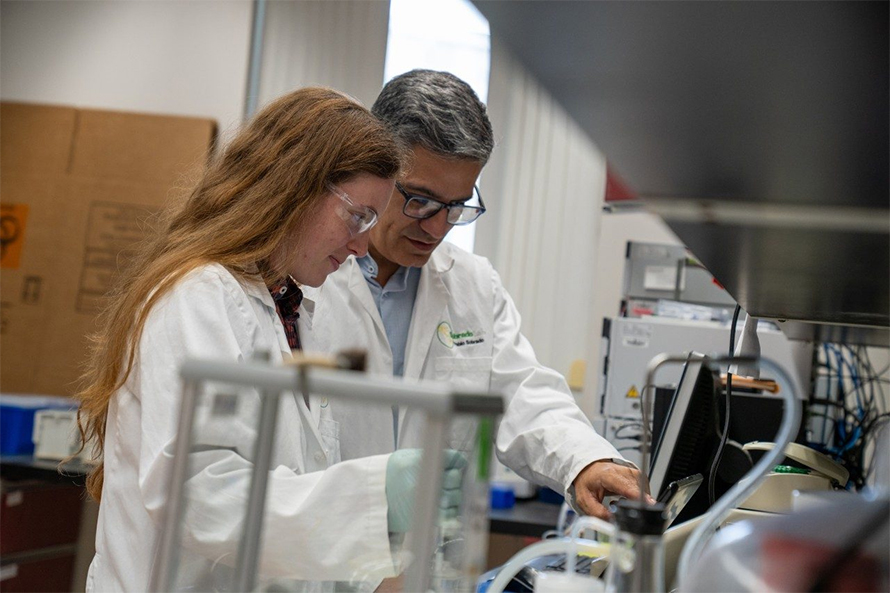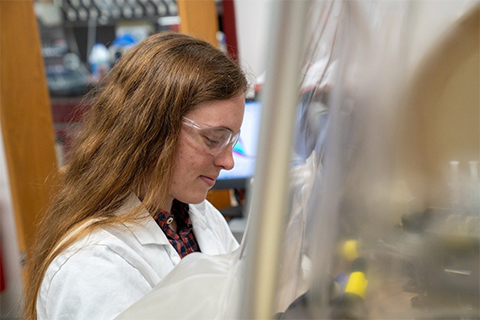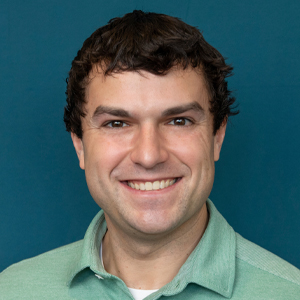There’s more to blue cheese than just the stench
Marbled veins of blue line the otherwise antique white surface.
As you approach, the pungent smell fills your nostrils, akin to gym socks for some.
But there’s far more to blue cheese than just the stink. The marbled veins of blue, which are edible Penicilliummolds, produce compounds with antifungal, antibacterial, and other biological properties in high doses also known as natural products.

Virginia Tech researchers found a new, efficient way to synthesize some of these beneficial blue cheese compounds in a way that avoids the use of harmful chemicals. Previously, the synthesization of these compounds was either extremely low in yield or required the use of harmful or dangerous chemicals.
“This discovery explains the mechanism behind a new reaction in our field, filling a knowledge gap,” said Sydney Johnson Ph.D. ’24, the lead author who earned her doctorate in biochemistry.
Antibacterial resistance has become a growing problem for society, which was caused by the overuse of natural products used on the market for decades, Johnson said.
By finding a way to synthesize on a large scale a naturally occurring compound that hasn’t previously been used for antibacterial applications, Virginia Tech researchers were able to evade the existing antibacterial resistances.
“We work with an enzyme that can help create a natural product that has a unique structure that would make it very difficult for pathogens to become resistant,” Johnson said. “Existing pathogens would have to evolve to be resistant to this new compound.”
The paper was recently published in ACS Biochemistry.

“I like to train innovative scientists that work on trying to move the science forward by developing projects that move the entire field forward,” said Pablo Sobrado, professor of biochemistry who leads the Sobrado Lab and is also a researcher on the paper. “Sydney achieved that with this research.”
Enzymes are proteins that help speed up chemical reactions. For their experiment, researchers used an enzyme that produces something called roquefortine L. Parts of its chemical structure are biologically active, which means that it can have beneficial properties such as antimicrobial activities.
In addition, the production of roquefortine L is central to the production of other molecules called glandiclone, melegranin, and oxaline, which have been shown to have broad antimicrobial properties and promising anticancer effects against human breast and leukemia cancer cells.
This enzyme attaches two hydroxyl groups to a nitrogen atom, which are functional groups found in sugars and alcohols. A hydroxyl group consists of one hydrogen and one oxygen atom. Through a complex chemical process, the hydroxyl groups then develop an entirely different functionality.
“This has not been studied in detail before, and Sydney showed how the enzyme holds on first to the product that has the one hydroxyl group, attaches the second group, and then obtains the final product,” Sobrado said.
Many fungal species make this compound naturally, and it’s relatively new in the biochemistry field to research how to synthesize these processes at a large scale. According to the researchers, the reaction mechanism and the actual chemistry that takes place on the involved nitrogen atom is completely novel from other publications.
“This publication lays the foundation to utilize the enzyme to synthesize the natural products,” Johnson said. “The improvements make this process much more marketable. Eventually, we could get a drug containing one of these compounds or something similar to it to the market.”
This article is republished from the Virginia Tech News page. Read the original here.
Enjoy reading ASBMB Today?
Become a member to receive the print edition four times a year and the digital edition monthly.
Learn moreGet the latest from ASBMB Today
Enter your email address, and we’ll send you a weekly email with recent articles, interviews and more.
Latest in Science
Science highlights or most popular articles

The science of staying strong
Muscles power every movement, but they also tell the story of aging itself. Scientists are uncovering how strength fades, why some species resist it and what lifestyle and molecular clues could help preserve muscle health for life.

Bacteriophage protein could make queso fresco safer
Researchers characterized the structure and function of PlyP100, a bacteriophage protein that shows promise as a food-safe antimicrobial for preventing Listeria monocytogenes growth in fresh cheeses.

Building the blueprint to block HIV
Wesley Sundquist will present his work on the HIV capsid and revolutionary drug, Lenacapavir, at the ASBMB Annual Meeting, March 7–10, in Maryland.

Gut microbes hijack cancer pathway in high-fat diets
Researchers at the Feinstein Institutes for Medical Research found that a high-fat diet increases ammonia-producing bacteria in the gut microbiome of mice, which in turn disrupts TGF-β signaling and promotes colorectal cancer.

Mapping fentanyl’s cellular footprint
Using a new imaging method, researchers at State University of New York at Buffalo traced fentanyl’s effects inside brain immune cells, revealing how the drug alters lipid droplets, pointing to new paths for addiction diagnostics.

Designing life’s building blocks with AI
Tanja Kortemme, a professor at the University of California, San Francisco, will discuss her research using computational biology to engineer proteins at the 2026 ASBMB Annual Meeting.

